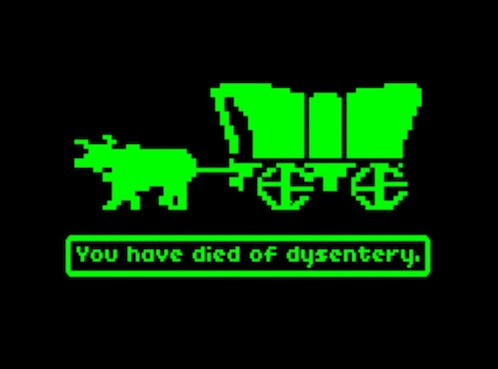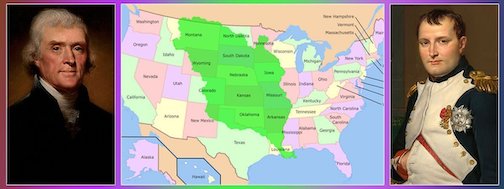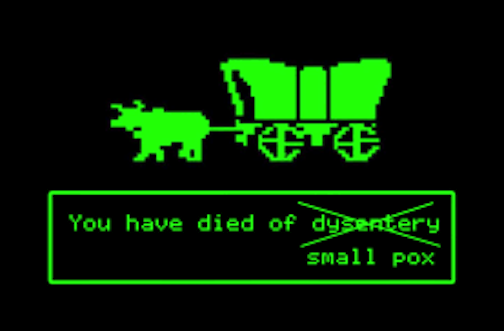Taking time to explain history to younger people is a gift that keeps on giving.
What if it’s someone from another country asking about a place like Oregon?
Oregon? Who cares about Oregon?
I know a young man from another country who cares.
A man in his early thirties asked if I thought more people died today than earlier times.
Since it’s 2022, a time of covid virus and mutations, I decided taking time to break it down was a good idea.
Besides, we were on my Oregon deck shucking corn so the timing was right. I used the most common reference available: a video game.
Specifically The Oregon Trail Game.
But first, I gave him some background of Oregon. It’s a good story worth telling and re-telling.
The Oregon Story
The real story begins with the Louisiana Purchase.
When you buy new land, inspection is key.
For example, if you buy three acres of land in the desert, you expect to control those three acres.
But a closer inspection shows one buildable acre allowed out of three and it’s already taken up by a beautiful house and outdoors living spaces including a big swimming pool.
The other two acres are designated for environmental protection and habitat preservation, which means a walk in the yard requires strapping on a pair of snake gaiters.
The Louisiana Purchase was bigger than three acres, but what was out there?
The Louisiana Purchase, made 200 years ago this month (2003), nearly doubled the size of the United States. By any measure, it was one of the most colossal land transactions in history, involving an area larger than today’s France, Spain, Portugal, Italy, Germany, Holland, Switzerland and the British Isles combined. All or parts of 15 Western states would eventually be carved from its nearly 830,000 square miles, which stretched from the Gulf of Mexico to Canada, and from the Mississippi River to the Rocky Mountains.
Oregon was on the other side of the Rockies and still is.
Back then it was called the Oregon Country, or Oregon Territory.
The Oregon Territory stretched from the Pacific coast to the Rocky Mountains, encompassing the area including present-day Oregon, Washington, and most of British Columbia.
America’s claim on the Oregon Country was strengthened by the pioneers on the Oregon Trail, and that’s where the story gets twisted.
Taking Time For The Oregon Trail
A quick search on this blog shows I’ve written something about the Oregon Trail on over 200 posts.
It seems like a lot until I checked on total blog posts, which number over 2600.
Traditional history tells of the Oregon Trail starting in Missouri.
I told my new student about the border states pre-Civil War where black families and white families could be neighbors.
However, history shows not everyone was a good neighbor.
Some of the bad neighbors packed up a wagon, strapped Grandma to a chair, and aimed the oxen west.
According to Oregon’s founding constitution, black people were not permitted to live in the state. And that held true until 1926. The small number of black people already living in the state in 1859, when it was admitted to the Union, were sometimes allowed to stay, but the next century of segregation and terrorism at the hands of angry racists made it clear that they were not welcome.
2
After logging 2000 miles on foot, the early pioneers showed up spent at the end.
Luckily the local leader had pity on them and went against orders to help them survive.
He was later called The Father of Oregon. His name is Dr. John McLoughlin.
He did the right thing in the face of human suffering.
The early wagon train was allowed to set up camp near Fort Vancouver.
It was land occupied by native people who followed a tradition of seasonal migration for thousands of years. They were away when the pioneers showed up and returned to a housing problem.
Then things got worse for the natives.
3
Back to the question the new history student asked: did more people die in the past?
I liked the question. This is the better answer I didn’t make at the time:
Dysentery:
Dysentery is usually spread as a result of poor hygiene. For example, if someone who has dysentery doesn’t wash their hands after using the toilet, anything they touch is at risk. The infection is also spread through contact with food or water that has been contaminated with fecal matter.
Cholera:
Cholera is a bacterial disease usually spread through contaminated water. Cholera causes severe diarrhea and dehydration. Left untreated, cholera can be fatal within hours, even in previously healthy people. Modern sewage and water treatment have virtually eliminated cholera in industrialized countries.
Typhoid:
People who drink contaminated water or eat food washed in contaminated water can develop typhoid fever. Other ways typhoid fever can be contracted include: using a toilet contaminated with bacteria and touching your mouth before washing your hands. eating seafood from a water source contaminated by infected poo or pee.
If the Oregon Trail Game does one thing right it’s taking time to show what happens in the absence of clean water.
You might die.
Consider the possibilities if you’re one of the men around with a fragile masculinity that tells them clean water and clean air and good healthcare don’t matter.
Ignore their crap, or else, is the message I get.





